Improving My Teaching of Reading:
New Techniques; Old Methods.

This week I took a very important step towards achieving that goal when I implemented some wonderful techniques of Kylene Beers and Robert E. Probst. They recently authored a sharp book on how to effectively teach reading called Notice and Note. I saw them speak at the NCTE to a room of about 300 teachers. Everyone I talked to and collaborated with at the session was excited and energized by their presentation, their ideas, and their new book.
The pamphlet in the right of the photograph was distributed at the session. It summarizes a fantastic way to improve the teaching of reading -- which , goodness know -- ain't freakin' easy!!
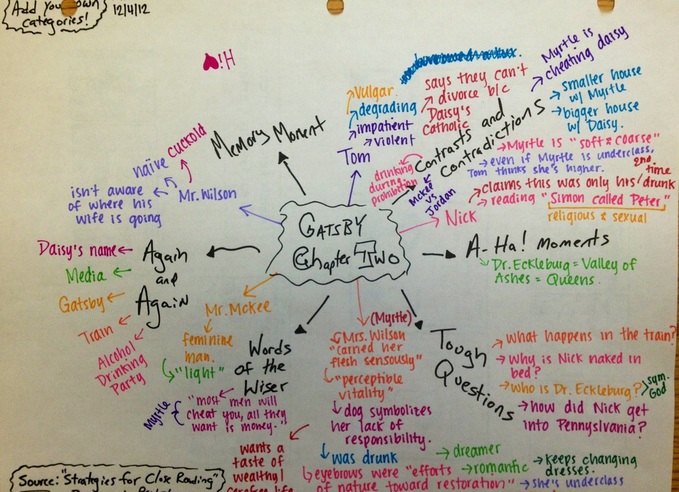
You can read the signposts and their descriptions better if you click this link to the book's flyer, which I linked from the Heinemann web site.
In my lesson, I summarized the signposts for my AP Language classes. We're studying The Great Gatsby -- which is especially interesting because I teach in Great Neck, the book's famous setting. I encouraged my pupils to view each signpost through two perspectives: a character's and your own. For example, "Tough questions might mean a tough question a character faces. But, it can also mean a tough question that is raised for you as you read."

Executing the lesson: I put 20 minutes on a countdown timer -- I love having a classroom computer hooked up to a projector! -- and told the students to "Deconstruct Chapter two, looking for the signposts. You can work alone or with a partner or with a few friends. Look through the book, talk about the book, and take colorful notes!" They went into workshop mode while I wandered around the room, checked in with students, answered questions, and coached them to find the information in the text.
The students were digging into the book, reading parts out loud, having intellectual conversations, sharing and debating ideas, creating mind maps, and finding their own ways through the material.
The lesson was a hit and -- dare I say it !? -- Common Core ready! Plus, the students were having fun!
After their 20-minute workshop session, I led them in a whip. I love this technique for just about any lesson. All you do: Call on each and every student in the class to say something. I rely on it as often as I do magic markers and mind maps. In this whip, each and every student had to "Read and explain one idea from your mind map. Be sure to take notes as we go through the class and talk about the points raised."
I always, always, always instruct my students to take notes. I frequently give instructions like "Write this down....." or "Add this to your mind maps...."
Mind mapping and the power of color: These are two of the easiest, most under-appreciated, and under-taught lessons in education. Another easy lesson: Teach your students how to take notes with direct instructions.

Well, here's a similar lesson done in a more "teacher-centered" way. The photo above is from the Gatsby lessons I've been using in recent years. I hand out this mind map, read key scenes to the class, and lead them in discussions about the book and its themes. The students take notes based off my cues.
This method is adequate -- but the teacher is at the center of it. I am telling them what to note. I am reading to them. I am deciding what's important in the text. That's being teacher-centered.
(Of course, they are still making colorful mind maps ... which is always a fun way to learn!)
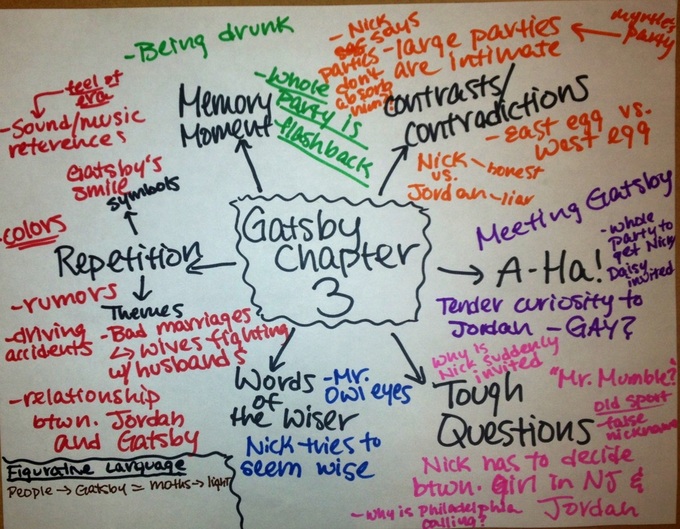
Notice this student added "symbols" and "themes" to repetition -- while carving out a corner for "figurative language." The work above it has many of its own inventions and innovations.
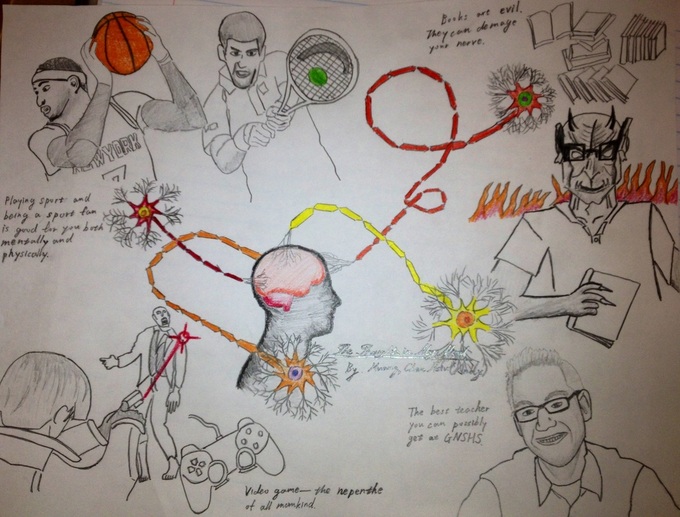
For more student samples, check out my mind map gallery!
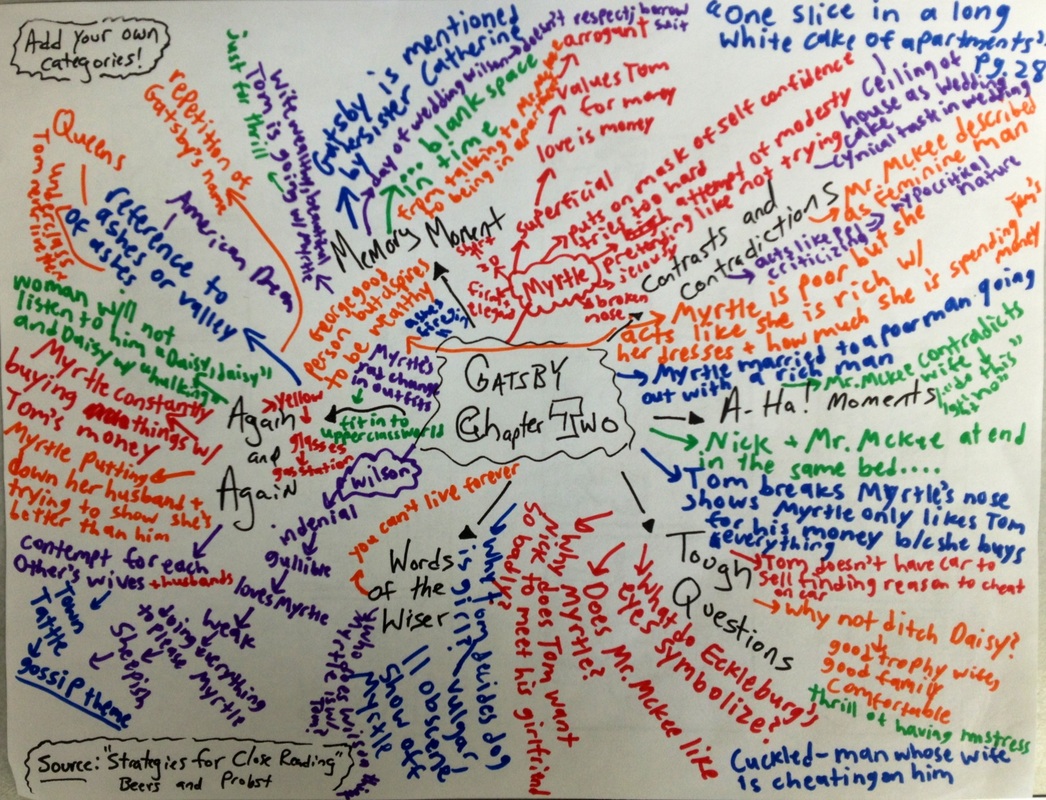
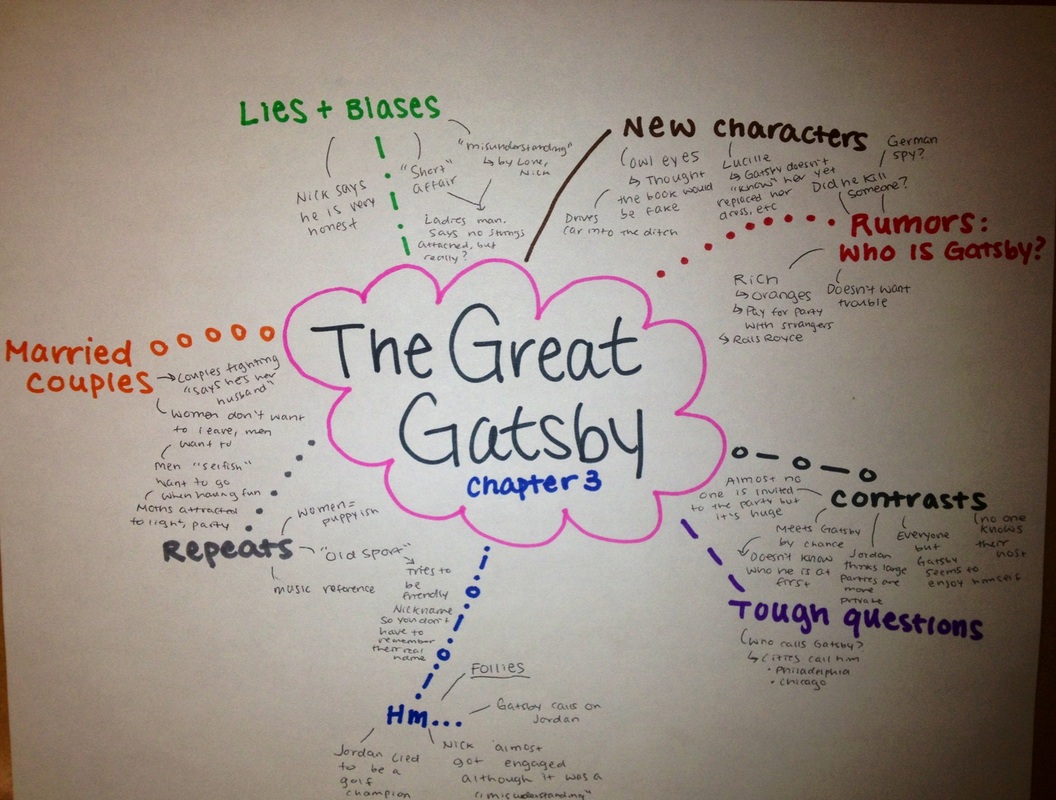

 RSS Feed
RSS Feed